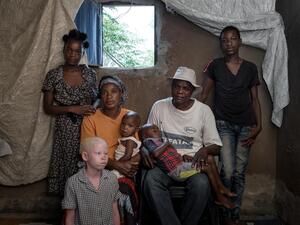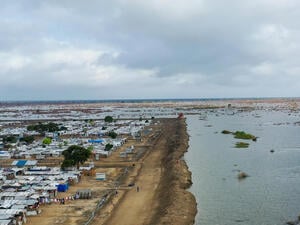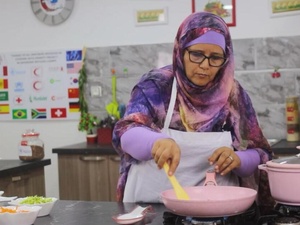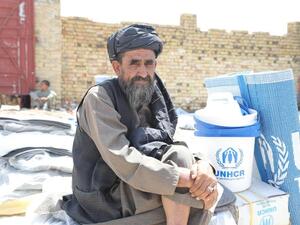Kenya: Malnutrition levels in refugee camps cause alarm
Kenya: Malnutrition levels in refugee camps cause alarm
UNHCR, the World Food Programme (WFP) and UNICEF are warning that the levels of malnutrition in refugee camps in Kenya have reached alarming levels and are jointly appealing to donors for US$ 32 million to try and reverse this situation. At the back of the room is a joint press release issued in Nairobi today with further details.
A survey mid-2006 showed that despite WFP providing 95 percent of general food distribution ration for the last two years, the acute malnutrition rate was 22.2 percent in the Dadaab camps and 15.9 percent in Kakuma camp, well above the World Health Organisation's emergency threshold of 15 percent.
Recurrent reduced donor funding to UNHCR has had a negative impact on the provision of essential nutrition services, complementary foods and non-food supplies to refugees. A complete package of assistance is needed to overcome chronic shortages in essential commodities such as firewood, energy saving stoves and soap to ensure refugees are not compelled to sell their food to meet the need for these items. UNHCR is asking for US$7.17 million to meet these needs.
The Dadaab complex of three refugee camps host some 175,000 refugees, mainly from Somalia, with around 35,000 children under five years old. Kakuma camp houses 62,000 persons with about 10.5 percent of the population under five. The camps are in harsh, semi-arid environments.
The Kenyan government does not allow refugees to find employment outside the camps, to cultivate land or graze livestock leaving the refugee population almost entirely dependent on aid from the UN and NGOs.
In 2006, the already limited assistance for the refugees was stretched even further with an influx of some 34,000 refugees fleeing conflict in neighbouring Somalia and extensive floods which destroyed portions of the camps and cut off Dadaab from supply routes for nearly two months. The floods resulted in displacement of hundreds of families within the camps and massive destruction of physical infrastructure including latrines, residential buildings and hospitals.









